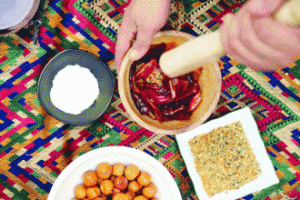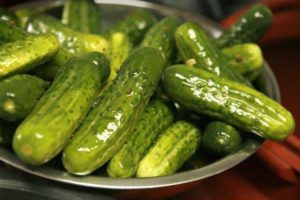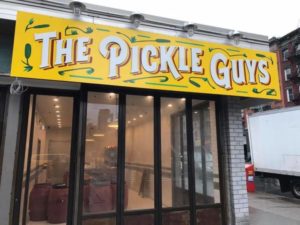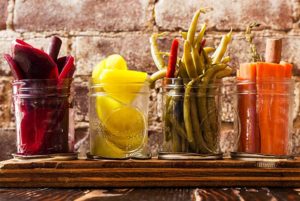SPICE ROUTE TO THE PAST
By Ankita Jain – the pioneer
Pickles made and preserved using age-old methods are gradually finding space for themselves in a book by Chef Kunal Kapur. Ankita jain reports
Think pickles and you’re immediately transported to childhood. When summers meant mothers, aunts and grandmothers working their way through mounds of cut mangoes, measuring out spices, salt and freshly-pressed gingelly oil. Finally, the spicy mix would go into huge, waist-high jars, be covered with a cloth, and tied with a piece of string. The pickle jars were off bounds for most; only the chosen lady of the house would do the honours every day – air out the mix, give it a quick stir with a dry ladle, and re-seal the jars till the contents inside were ready for consumption.
In times when ‘Make In India’ is gaining currency, chef Kunal Kapur is celebrating indigenous product like pickles that we have been making for centuries. Kunal has started a pickle campaign titled – ‘Pickle Tickle’ which will enable home cooks, pickle makers and pickle connoisseurs from across India to submit their most innovative and unique pickle recipes. The aim is to put together the largest collection of pickles from different parts of India in his forthcoming book.
Whenever we think pickles and we are immediately transported to childhood. So what are chef Kunal’s fond memories around pickles? “Being brought up in a Punjabi family in Delhi, every summer holidays meant watching our favourite mango being pickled. It is very nostalgic moment as we would climb up the top floor using the wooden ladder to place the white sheet on the floor of the terrace and spread mangoes for drying. The sight from that terrace saw almost every house drying mangoes in the season for pickling. Some times when suddenly the weather would change, mom would shout out loud to bring down the pickle from the terrace. We would rush and grab before anything could happen to it. Both of us (Kunal and his sister) would help, wash and wipe the mangoes and as our granny would cut them with a large knife we would sneak a piece or two of the raw mango and quietly eat it with a pinch of black salt.” When asked about the Pickle Tickle campaign and what went into the germ of this idea, he explained, “This campaign requires help from anyone to either contribute a unique pickle recipe or recommend a unique pickle or a pickle maker and I will travel and learn the pickle myself and document that recipe and the pickle maker in the book. At the same time, India has the largest collection of pickles in the world and yet we have never documented it and pickling is a dying art. More and more people are happy buying a bottle of pickle from the market not knowing the real taste and benefits of homemade pickle.” The book will also feature pickles from the least discovered places right from north east to Jammu and Kashmir, to Andaman and Nicobar. “My first research on pickles started from Nagaland and the next is Assam,” he said. The uniqueness about his campaign is the crowd sourced model. “My knowledge on pickles is limited to what I know and what I have learnt with my travels. And if I have to put the largest collection of the most unique pickles of India then I need help from people across India and hence the campaign urges all people to contribute to the book by sharing their unique pickle recipe.” For chef Kunal travel is an experience and he treats it as an investment. “Travelling to me brings up unique ingredients coupled with interesting methods that becomes the catalyst for innovation when I come back to my kitchen.”
With most young families keen to eat out these days, will these family secrets like pickles die a slow death? “The overall aim is to revive the dying flavours of pickle and to keep our cuisine and heritage alive in a form that can be replicated by generations to come. Also, to make people aware that there are several healthy pickles as well which can be easily made part of their daily diet.”






